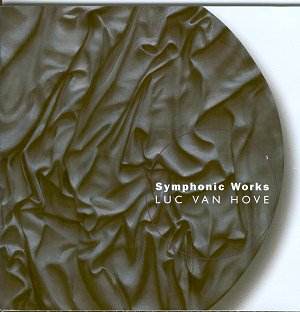Luc Van Hove, born in 1957, studied at the Royal Conservatory
in Antwerp and attended master classes at the Mozarteum in Salzburg
and at the University of Surrey in Guildford. His present output (about
forty opus numbers so far) includes many chamber works and several substantial
orchestral pieces (including three symphonies and three concertos).
The earliest work in this cross-selection of his orchestral
output is the beautifully atmospheric Carnaval op het Strand Op.17
commissioned for the occasion of an important exhibition devoted to
the Belgian painter James Ensor and completed in 1985. Appropriately
enough, it has as its starting point the eponymous painting of Ensor
(the Dutch title means Carnival on the Beach). The piece though
is by no means programmatic but rather evokes the main features of Ensorís
painting: on the one hand, the superficially monotonous, unchanging
seascape and, on the other hand, the exuberantly clashing colours of
the masks (a typical Ensor fingerprint). The "sea music" is
actually present throughout as a continuum upon which colourful
episodes are superimposed. The latter build-up towards an impressive
climax, brutally interrupted. The ever-present, if unnoticed "sea
music", albeit in a highly simplified form, slowly fades away.
A beautifully evocative piece on all counts. (Incidentally, this is
its second recording, the first [RADIO3 R3 99012] being part of a collection
of Ensor-inspired works by Belgian composers.)
The Symphony No.1 Op.25, completed in
1989, is characterised by a greater emphasis on rhythm and rough energy,
though the central section Mahler, paying overt homage to the
Austrian composer, has its calmer, more lyrical moments such as its
outer sections. However, the whole work leaves a strong impression of
troubled turmoil though there is near the end of the third movement
a short-lived attempt at a big tune that does not succeed to take flight
and that is abruptly cut short by the impatient, angry coda.
Stacked Time Op.26 of 1990 for electric
guitar and orchestra was commissioned by the organization Jeugd and
Muziek (i.e. "Youth and Music") for its fiftieth anniversary.
The commission insisted that the piece should bridge the gap between
pop and classical music, hence the choice of a rather unusual solo instrument.
In this piece, Van Hove consolidates many characteristics already present
in some of his earlier works and this one is a further attempt to blend
tonal and atonal elements into one musically satisfying whole. Again,
rhythms feature prominently in this piece that has its share of irony
but also some more relaxed moments such as the central movement Träumerei.
The oboe concerto Triptiek Op.29, composed
in 1993, is a much more lyrical piece in which long melodic lines abound.
The work has three movements, though the weight of the musical argument
is reserved for the long central movement, the outer slow movements
acting respectively as short prologue and epilogue. To my mind, this
is one of Van Hoveís most beautiful and attractive pieces.
The Piano Concerto Op.32, completed in
1995, has a somewhat unusual layout. A short first movement A Dance
Tune acts as a prelude to the longer, highly contrasted, narrative
second movement A Story. (The title of this second movement says
much as its content, i.e. a long ballad-like narration not unlike Frank
Martinís Ballade pour piano et orchestre.) A Dance
Tune begins somewhat hesitantly with the pianoís gentle musings
supported by chamber-like instrumental forces whereas A Story
calls for larger orchestral forces. This rather unusual piano concerto
could, I believe, become as popular as the Martin work mentioned.
Admittedly composed under the shadows of the horrendous
affairs that brutally shattered Belgium in 1996 (the Dutroux case),
the Symphony No.2 Op.34, completed in 1997, is a quite
different piece than its predecessor. It is cast in two movements of
fairly equal length (Elegia and Quasi una fantasia con epilogo)
and is much more elegiac in mood and emotionally more introvert. It
is also overtly more melodic than the First Symphony.
Van Hoveís music is clearly of its time, though still
rooted in some 20th Century mainstream symphonic writing,
successfully blending tonal and atonal elements into a powerfully expressive
and communicative idiom. These fine, superbly crafted pieces are well-served
by committed readings though the sound level of the recording might
be too high for some tastes, but this double-CD set provides for a quite
comprehensive survey of Luc Van Hoveís powerfully gripping music.
Hubert Culot


